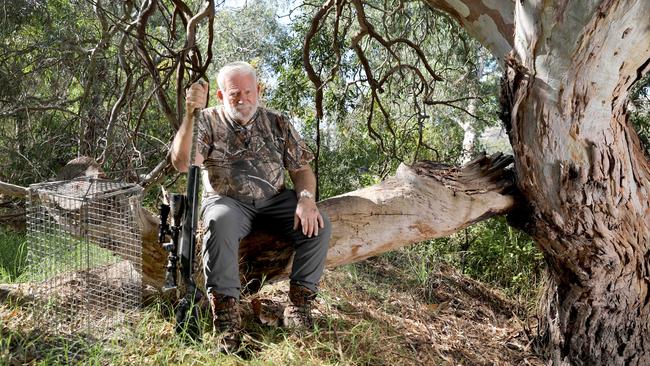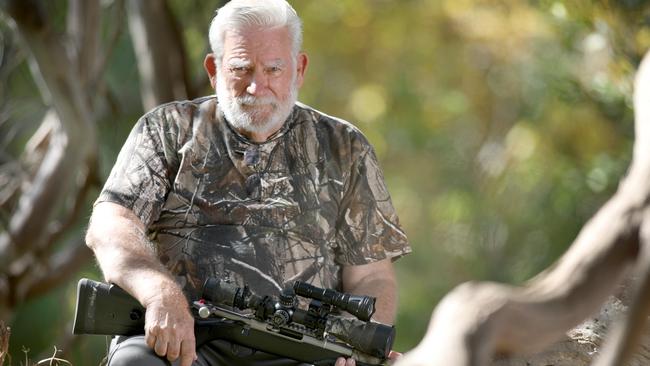SA pest control companies pushing for permission to shoot stray and feral cats on sight to prevent further wildlife destruction
SA pest controllers say laws need to change so the animals can be targeted more easily.

SA News
Don't miss out on the headlines from SA News. Followed categories will be added to My News.
Pest control companies are calling for changes to cat control laws that prevent them from shooting feral or stray cats within one kilometre of a private residence.
Under the Dog and Cat Management Act 1995 they can only “seize and detain” (trap) these cats, which must then be delivered within 12 hours, to a vet, the RSPCA, Animal Welfare League, or a council if it has approved cat detention facilities, to determine if the cat is owned.
The Feral Terminator managing director Bill Lewis says the law must be changed because it discourages pest control and enables the further destruction of native wildlife by feral cats.
Shooting cats, he says, is the most economical, efficient and humane approach.

“When you see a cat, it’s an opportune thing, they don’t hang around, a lot of times they don’t go into traps,” Mr Lewis said.
“If you can’t put it down when you see it, chances are you won’t see it again, just like if you shoot the cat and you miss it, you probably will not get another shot.”
The National Environmental Science Program’s Threatened Species Recovery Hub reports that on average, a single feral cat in the bush kills about 370 invertebrates, 44 frogs, 225 reptiles, 130 birds and 390 mammals a year. The collective toll of Australian animals killed each year by all feral cats, including unowned stray cats, but excluding pet cats, is about 1.1 billion invertebrates, 90 million frogs, 600 million reptiles, 320 million birds and 960 million mammals.
State Environment Minister David Speirs says he shares frustration with the current framework and the lack of options available to control feral cats, But he is in no hurry to make changes.
“The Dog and Cat Management Act is set for a review in 2022 and feral cat control will be one of the many issues looked at as part of this,” Mr Speirs said.
“Feral animals such as cats can have significant environmental impact on both flora and fauna, but it is important local control measures are undertaken within the current rules.
“The review will be wide-ranging and the Dog and Cat Management Board is looking at a range of options ahead of 2022.”
A Dog and Cat Management Board spokesman says the current legislation ensures “that owned pets are not inadvertently targeted”.
“It is important to strike a balance between the rights and responsibilities of pet owners, and the need to protect wildlife and livestock,” the spokesman said.
“Additionally, Councils have the power to create by-laws for the control or management of cats within their areas. By-laws may include provisions for curfews, confinement, mandatory registration including fees, and a maximum number of cats per household.“
Cattle rancher Cherry Macklin has sought help from TFT to manage feral cats at her Ashbourne property.
“Usually, you just see the evidence, the dead birds, bandicoots with a bite mark on the back of the neck, even possums,” she said.
“For native animals and birds, it’s grim, it really is, the problem is just spiralling out of control and nobody is making any of the right decisions regarding the native wildlife, at all.
“It’s extremely frustrating.”





